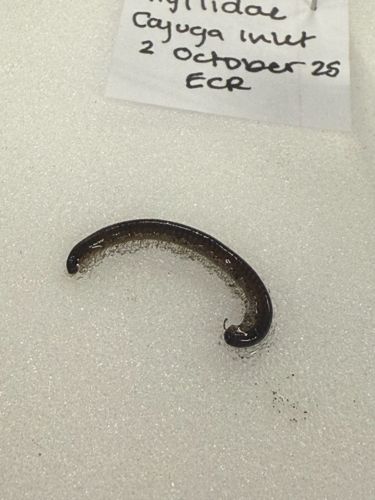Leech
Scientific Name: Hirudinea (class)
Order & Family: Clitellata (subclass), various orders and families within Hirudinea
Size: Typically 1-5 cm (0.4-2 inches), but some species can grow up to 30 cm (12 inches).

Natural Habitat
Freshwater environments (lakes, ponds, rivers), some terrestrial and marine species exist. Often found in shallow, calm waters with vegetation.
Diet & Feeding
Mainly carnivorous. Many are sanguivorous (blood-feeding) parasites of vertebrates, other species are predators of small invertebrates like worms, snails, and insect larvae, or scavengers.
Behavior Patterns
Leeches are segmented worms known for their suckers at both ends of their bodies, used for locomotion and attachment. They are fluid feeders, often staying hidden until a host is detected through vibrations, changes in light, or chemical cues. Sanguivorous leeches inject anticoagulants and anesthetics into their host while feeding.
Risks & Benefits
Risks: Sanguivorous leeches can cause temporary discomfort, itching, and minor blood loss. In rare cases, they can transmit pathogens, though this is uncommon. Benefits: Historically used in medicine (medicinal leeches) for bloodletting and still used in modern medicine for reattaching severed digits or skin grafts to prevent blood congestion. They are also an important part of aquatic food webs, serving as both predators and prey.
Identified on: 10/3/2025